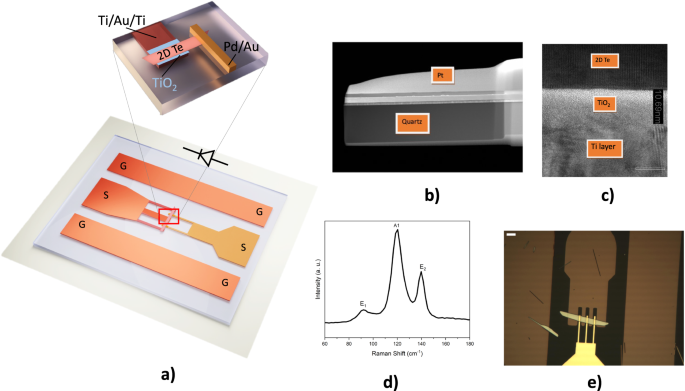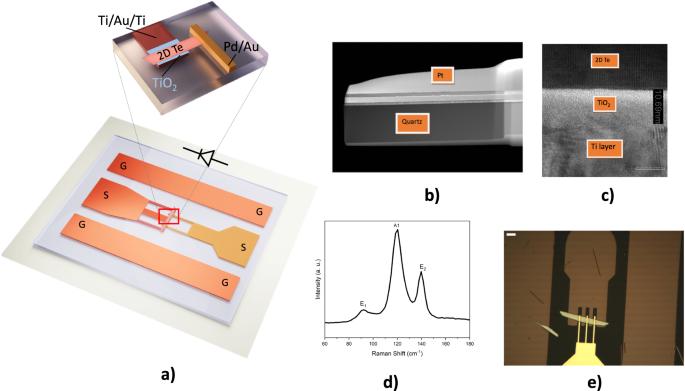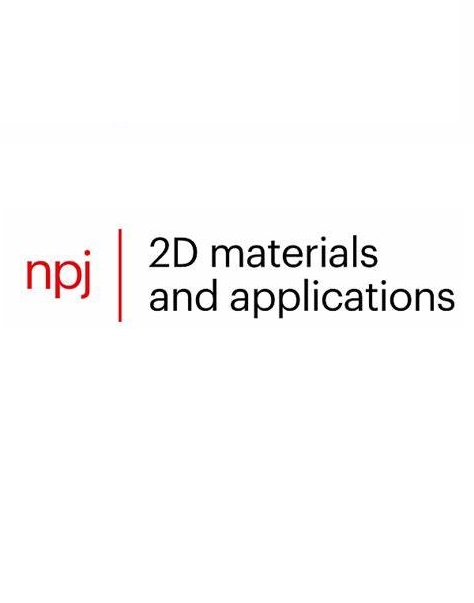Two-dimensional tellurium-based diodes for RF applications
IF 8.8
2区 材料科学
Q1 MATERIALS SCIENCE, MULTIDISCIPLINARY
引用次数: 0
Abstract
The research of two-dimensional (2D) Tellurium (Te) or tellurene is thriving to address current challenges in emerging thin-film electronic and optoelectronic devices. However, the study of 2D-Te-based devices for high-frequency applications is still lacking in the literature. This work presents a comprehensive study of two types of radio frequency (RF) diodes based on 2D-Te flakes and exploits their distinct properties in two RF applications. First, a metal-insulator-semiconductor (MIS) structure is employed as a nonlinear device in a passive RF mixer, where the achieved conversion loss at 2.5 GHz and 5 GHz is as low as 24 dB and 29 dB, respectively. Then, a metal-semiconductor (MS) diode is tested as a zero-bias millimeter-wave power detector and reaches an outstanding linear-in-dB dynamic range over 40 dB, while having voltage responsivities as high as 257 V ⋅ W−1 at 1 GHz (up to 1 V detected output voltage) and 47 V ⋅ W−1 at 2.5 GHz (up to 0.26 V detected output voltage). These results show superior performance compared to other 2D material-based devices in a much more mature technological phase. Thus, the authors believe that this work demonstrates the potential of 2D-Te as a promising material for devices in emerging high-frequency electronics.


射频应用中的二维碲基二极管
二维(2D)碲(Te)或碲烯的研究正在蓬勃发展,以应对当前新兴薄膜电子和光电器件所面临的挑战。然而,有关基于二维碲(Te)的高频应用器件的研究在文献中仍然缺乏。本研究对基于二维碲片的两种射频(RF)二极管进行了全面研究,并在两种射频应用中利用了它们的不同特性。首先,一种金属-绝缘体-半导体(MIS)结构被用作无源射频混频器中的非线性器件,其在 2.5 GHz 和 5 GHz 的转换损耗分别低至 24 dB 和 29 dB。然后,将金属半导体(MS)二极管作为零偏压毫米波功率检测器进行了测试,结果显示其线性分贝动态范围超过 40 dB,同时在 1 GHz 时电压响应度高达 257 V ⋅ W-1(检测到的输出电压高达 1 V),在 2.5 GHz 时电压响应度高达 47 V ⋅ W-1(检测到的输出电压高达 0.26 V)。这些结果表明,与处于更成熟技术阶段的其他基于二维材料的器件相比,该器件的性能更加优越。因此,作者认为这项工作证明了二维碲作为新兴高频电子器件材料的潜力。
本文章由计算机程序翻译,如有差异,请以英文原文为准。
求助全文
约1分钟内获得全文
求助全文
来源期刊

npj 2D Materials and Applications
Engineering-Mechanics of Materials
CiteScore
14.50
自引率
2.10%
发文量
80
审稿时长
15 weeks
期刊介绍:
npj 2D Materials and Applications publishes papers on the fundamental behavior, synthesis, properties and applications of existing and emerging 2D materials. By selecting papers with the potential for impact, the journal aims to facilitate the transfer of the research of 2D materials into wide-ranging applications.
 求助内容:
求助内容: 应助结果提醒方式:
应助结果提醒方式:


